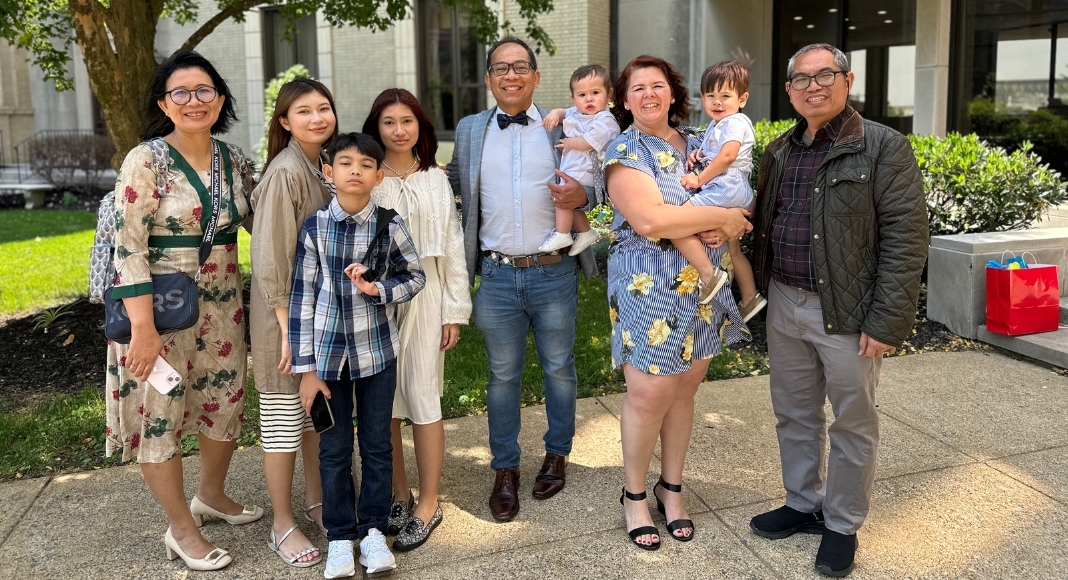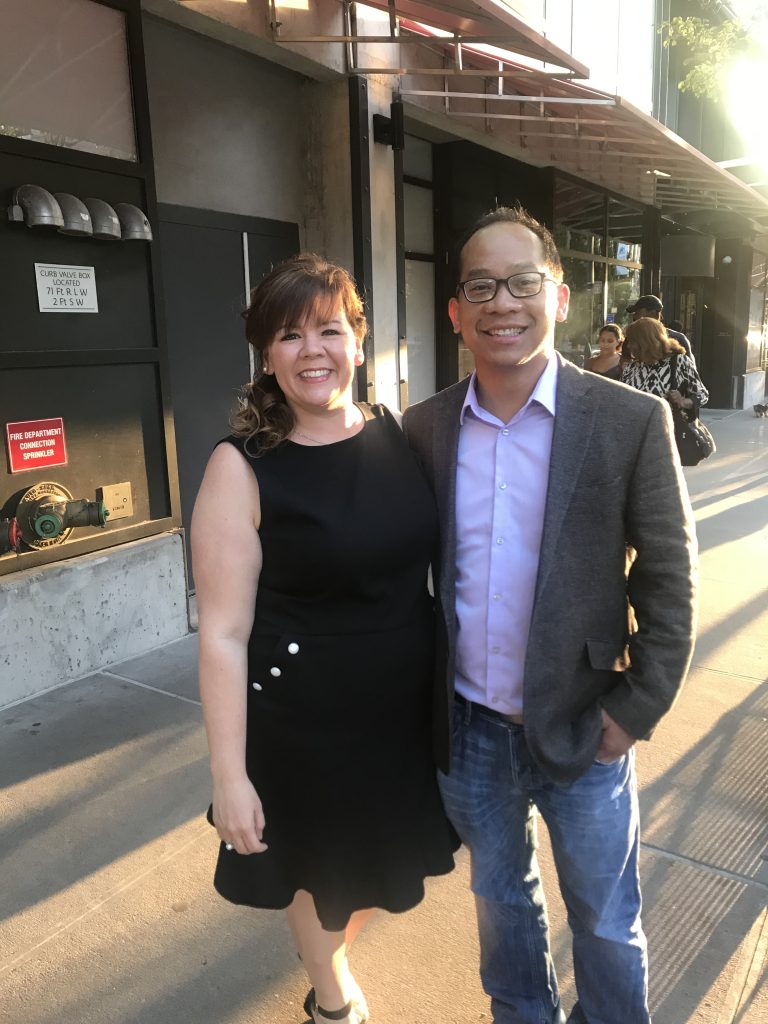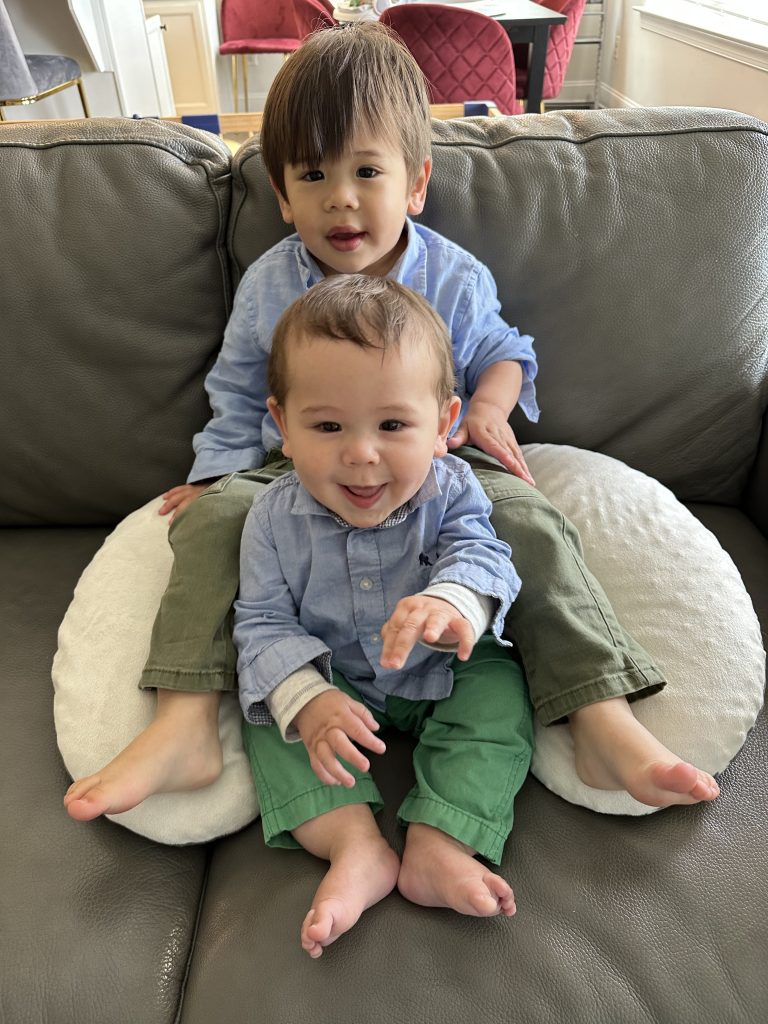
I’ve always loved cultures and actually studied world missions for my master’s degree. Most of my travel overseas has been through church or school mission trips, and I always loved learning about the places and people I’d visit along the way. When I moved to NYC, I saw the blending of cultures everywhere, from family-run ethnic restaurants, to multi-generational family-owned laundromats, to churches worshiping in multiple styles. I loved watching it all happen.
When I started dating my husband, I was so excited to learn about his culture. He’s Indonesian and most of his friend group was as well. Most of our dating involved hanging out with friends and getting to know each other’s rhythms and routines. I loved walking through Chinatown in Philadelphia (where he lived at the time) and listening to his friends speak to each other in Indonesian. I’d pick up every fourth word or so, thanks to Duolingo. I’d stay up late reading articles or watching shows that talked about Indonesia.
You can imagine when we got married the excitement I had to blend our cultures together.

Fast-forward five years, three wedding celebrations, two kids, two international trips, and too many misunderstandings/arguments later, and I’d still say we are happy to be living this crazy life together. Over the past two weeks, his sister and her family have been in the States visiting.
It was a great reminder of all we’ve learned and still have to learn, so I thought I’d share seven things you might experience raising a family in blended cultures:
1. Travel will naturally be a part of your family’s DNA. To see my husband’s family and for them to get to meet our kids, we have to be willing to make the trek around the world. Even my mom and sister have now been to Indonesia to attend our wedding there. We love this aspect of our family and take every opportunity to see them and even travel to other parts of the world.
2. You may not always know what’s going on or what is being said. This was probably one of the most shocking things to me early on. When my husband talks with his family or we travel to see them, it would be impossible for him to translate everything that’s happening, so often, I’ll just happily sit back and observe. For him, this mostly comes up in colloquial phrases that aren’t commonly taught when learning a second language and which are always fun to try to explain.
3. Your kids will get the benefits of both cultures. My kids are currently citizens of the US and Indonesia. They have passports for both and can be treated like a local in both places. We will teach them Indonesian, and I hope when they get bigger, they will have the benefit of living there for a time as well. They will learn about the history of both and I hope take deep pride in being from two cultures.
4. Your kids will experience the negatives of both cultures. This hasn’t happened with us quite yet because our kiddos are babies, but as I’ve learned from other blended cultural families, we will experience racism in different ways. Some from each culture will probably look down on us for blending our cultures in different ways and we will “break” cultural rules without even knowing it. I experienced this this week when my brother-in-law asked me to call him by the culturally correct name for “brother-in-law.” I honestly couldn’t figure out how to pronounce it, so I kept calling him uncle. I know it probably annoyed him and I felt badly about it.
5. You can blend common and unique traditions for your own family. We shaved our boys’ heads when they were babies like they do in Indonesia and made them smash cakes for their first birthdays as we do in America. We dress them in traditional clothes from time to time. I’m sure as they get older we will find plenty of things from both cultures to experience while skipping other things.
6. You will experience many misunderstandings. Okay, this one might just be for you and your spouse, but it’s still a helpful one! This is true for all relationships, but the caveat with blended cultures is that some of the misunderstandings go beyond the individuals involved to the cultures we come from. The expectations of our families, our relationships, and our kids are different and were shaped by cultures thousands of miles from each other, so we have to work a little harder at times to understand where we are coming from, and that’s okay!
7. Lastly, your kids will be really cute! We hear it all the time. 🙂



















